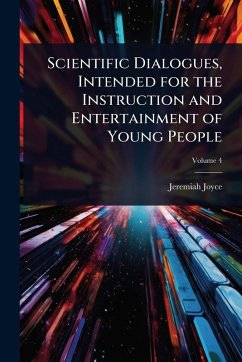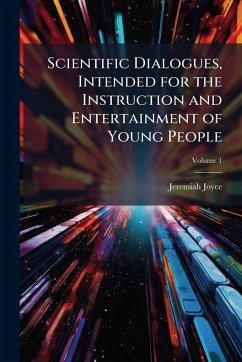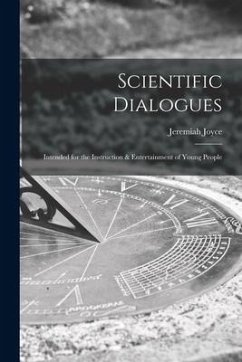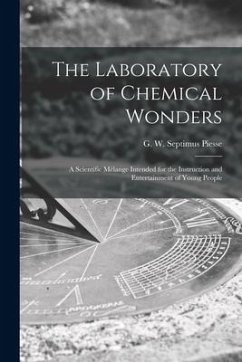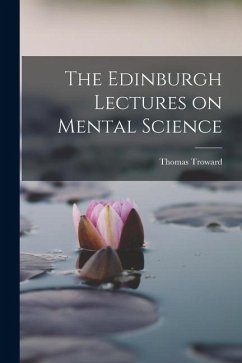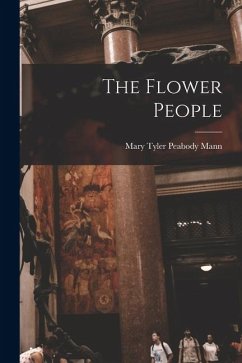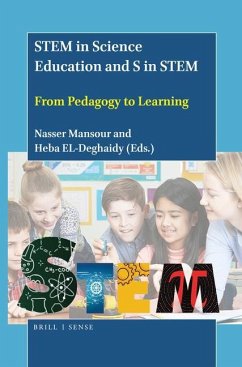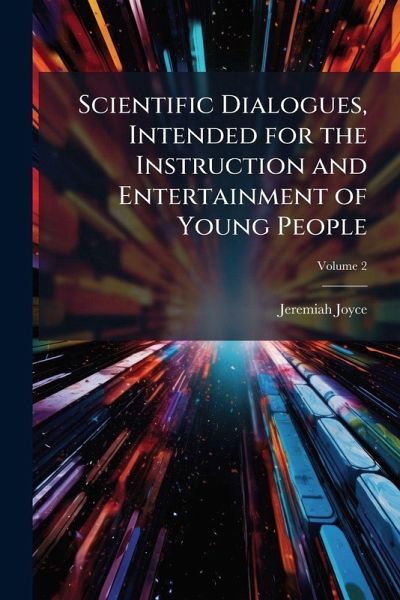
Scientific Dialogues, Intended for the Instruction and Entertainment of Young People
Versandkostenfrei!
Versandfertig in über 4 Wochen
22,99 €
inkl. MwSt.

PAYBACK Punkte
11 °P sammeln!
"Scientific Dialogues, Volume 2," by Jeremiah Joyce, is a meticulously crafted educational work aimed at introducing young minds to the wonders of natural and experimental philosophy. Originally published in 1818, this book adopts a conversational style to explain complex scientific principles in an accessible manner. Through engaging dialogues, readers are guided through various aspects of the natural world, fostering a deeper understanding of scientific concepts. Designed to both instruct and entertain, this volume serves as a valuable resource for students and educators alike, offering a gl...
"Scientific Dialogues, Volume 2," by Jeremiah Joyce, is a meticulously crafted educational work aimed at introducing young minds to the wonders of natural and experimental philosophy. Originally published in 1818, this book adopts a conversational style to explain complex scientific principles in an accessible manner. Through engaging dialogues, readers are guided through various aspects of the natural world, fostering a deeper understanding of scientific concepts. Designed to both instruct and entertain, this volume serves as a valuable resource for students and educators alike, offering a glimpse into the scientific knowledge and pedagogical approaches of the early 19th century. Joyce's work remains relevant for its clear explanations and its commitment to making science engaging for young people. This work has been selected by scholars as being culturally important, and is part of the knowledge base of civilization as we know it. This work was reproduced from the original artifact, and remains as true to the original work as possible. Therefore, you will see the original copyright references, library stamps (as most of these works have been housed in our most important libraries around the world), and other notations in the work. This work is in the public domain in the United States of America, and possibly other nations. Within the United States, you may freely copy and distribute this work, as no entity (individual or corporate) has a copyright on the body of the work. As a reproduction of a historical artifact, this work may contain missing or blurred pages, poor pictures, errant marks, etc. Scholars believe, and we concur, that this work is important enough to be preserved, reproduced, and made generally available to the public. We appreciate your support of the preservation process, and thank you for being an important part of keeping this knowledge alive and relevant.



